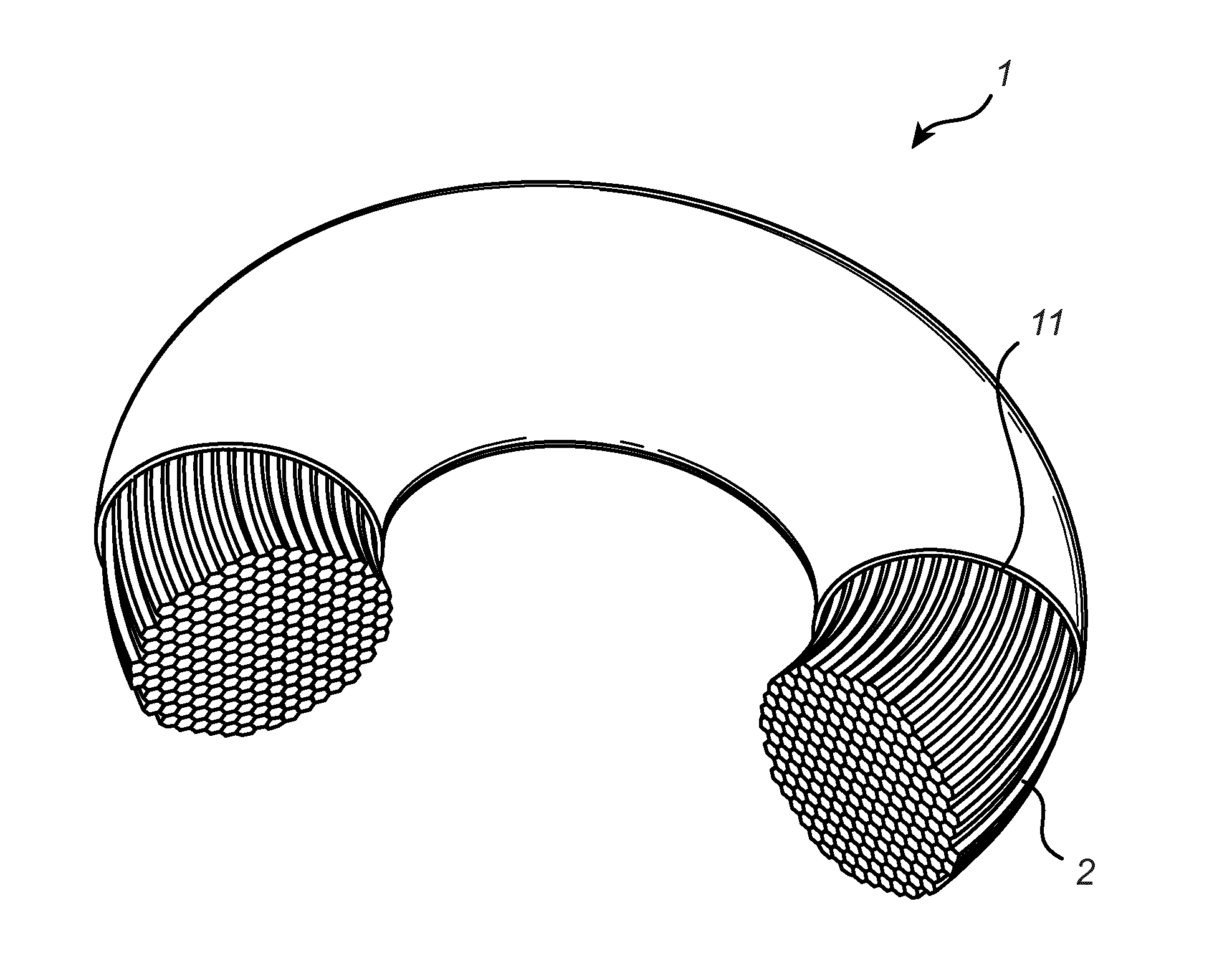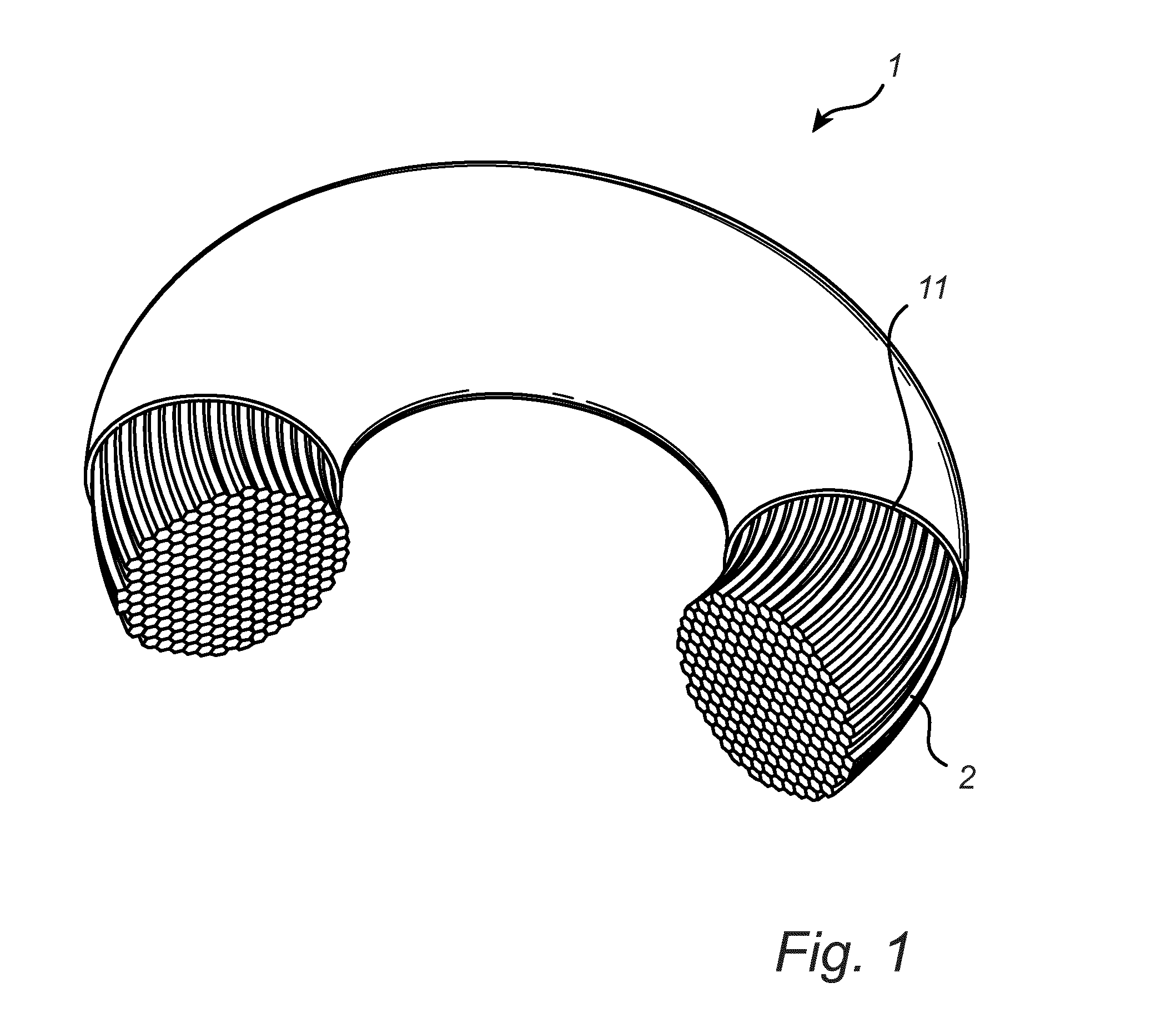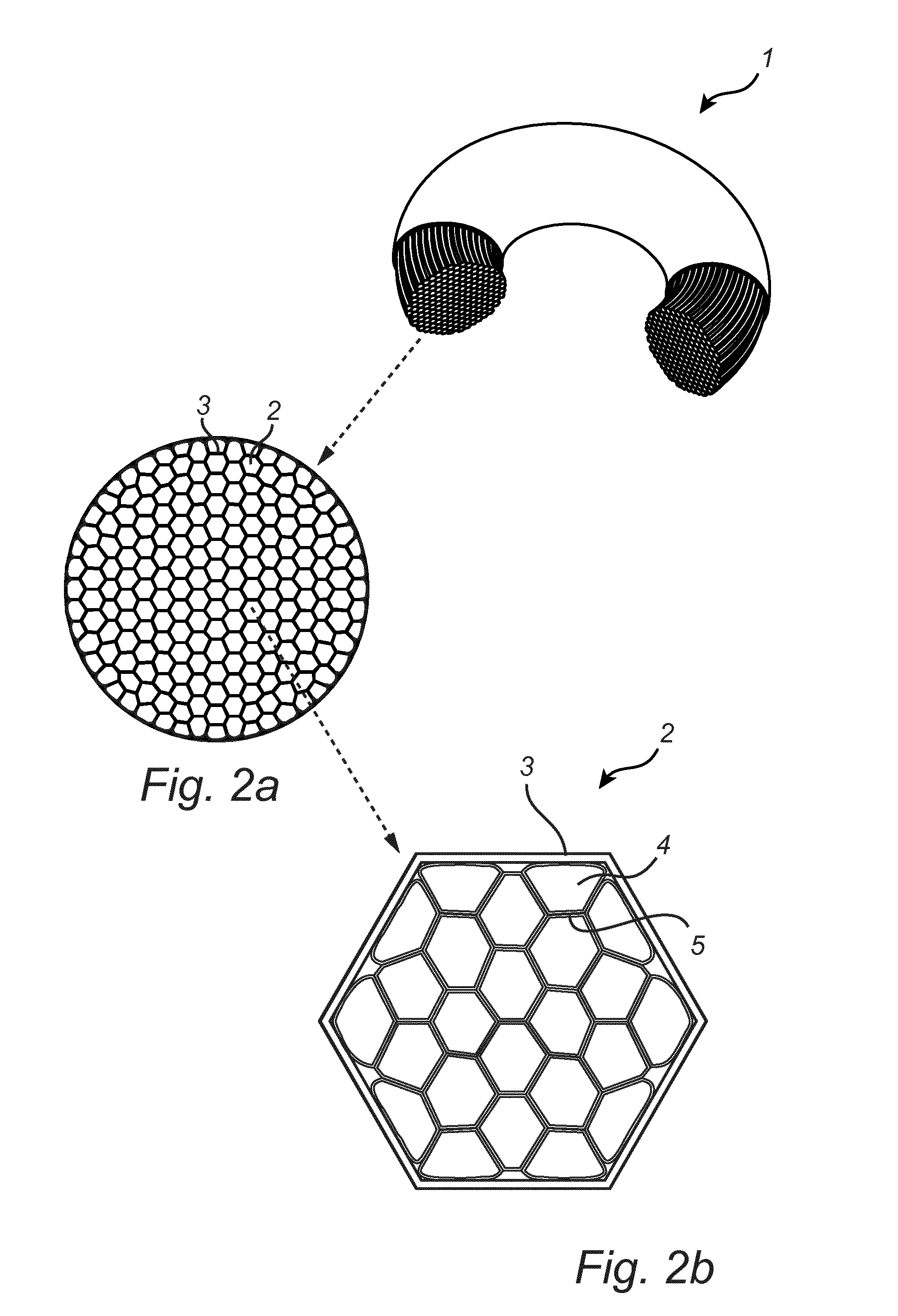Optimal inductor
a technology of inductor and inductor core, which is applied in the direction of magnets, magnetic bodies, cores/yokes, etc., can solve the problems of high energy loss, hot spot which can be difficult to cool, and harmful harmonic distortion of power electronics, so as to reduce the demand for small mechanical tolerances, reduce stray fields, and increase the magnetic flow
- Summary
- Abstract
- Description
- Claims
- Application Information
AI Technical Summary
Benefits of technology
Problems solved by technology
Method used
Image
Examples
Embodiment Construction
[0037]FIG. 1 shows a perspective view of a coil 1 for an inductor. The coil 1 is torus shaped and is built up by a wounded wire 2, better seen in the cross section of the coil shown in FIG. 2a. The coil is coated or wound with an insulated layer 11. In FIG. 2a it can be seen how the wire 2 has an insulating layer 3, and how the wire laps in the coil 1 have been compressed so that the shape of each inner wire lap is hexagonal, filling substantially all space, so that voids are reduced substantially. FIG. 2a further shows how the external wire layer of the coil is formed after the desired toroidal shape of the total coil so that the external wire layer follows the smooth toroidal torus shape of the coil 1. FIG. 2b shows an enlarged view of the cross sectional view of FIG. 2a showing the strands 4 of the wire 2. The strands 4 of the wire 2 are coated with a thin layer 5 of e.g. a polymer or resin to insulate the strands from one another.
[0038]FIG. 3 is a perspective view of an inductor...
PUM
| Property | Measurement | Unit |
|---|---|---|
| frequencies | aaaaa | aaaaa |
| isostatic pressure | aaaaa | aaaaa |
| electrically insulating | aaaaa | aaaaa |
Abstract
Description
Claims
Application Information
 Login to View More
Login to View More - R&D
- Intellectual Property
- Life Sciences
- Materials
- Tech Scout
- Unparalleled Data Quality
- Higher Quality Content
- 60% Fewer Hallucinations
Browse by: Latest US Patents, China's latest patents, Technical Efficacy Thesaurus, Application Domain, Technology Topic, Popular Technical Reports.
© 2025 PatSnap. All rights reserved.Legal|Privacy policy|Modern Slavery Act Transparency Statement|Sitemap|About US| Contact US: help@patsnap.com



